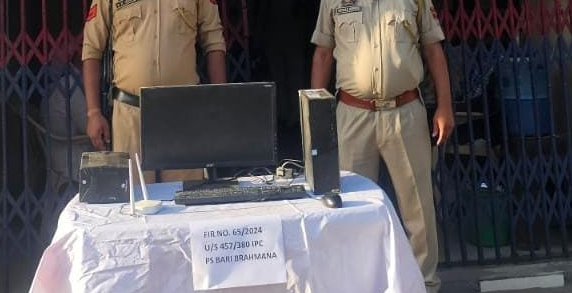Vikram Sharma
Theft is one of the most common crimes worldwide, affecting individuals, businesses, and communities. Police play a crucial role in investigating and solving theft cases, but public negligence and lack of coordination between citizens and law enforcement often create opportunities for criminals. This article explores the role of police in solving theft cases, reasons behind public carelessness regarding their properties, and potential solutions for better coordination between the police and the public in addressing theft-related challenges.
Role of Police in Solving Theft Cases
The primary responsibility of the police in theft cases is to investigate, recover stolen property, and bring offenders to justice. Their role includes:
Receiving Complaints and Registering Cases – Police begin the process by recording a First Information Report (FIR) or a complaint from the victim. This documentation is essential for initiating an official investigation.
Investigating the Crime Scene – Officers visit the location of the theft, collect evidence such as fingerprints, CCTV footage, or eyewitness accounts, and analyze how the theft occurred.
Tracing the Suspects – Police use intelligence networks, informants, and technology to track down suspects. Modern tools such as cyber monitoring, forensic analysis, and mobile tracking play a significant role in catching thieves.
Recovering Stolen Property – Once suspects are apprehended, police work to recover stolen items and return them to the rightful owners.
Preventive Measures – Apart from solving crimes, police also implement preventive strategies, such as increasing patrolling in theft-prone areas, conducting awareness programs, and encouraging the public to adopt better security measures.
Legal Proceedings – Police coordinate with the judiciary by providing evidence and witness testimonies in court to ensure that offenders are prosecuted and punished.
Why People Neglect the Security of Their Properties?
Despite knowing the risks of theft, many individuals fail to take adequate precautions to protect their movable and immovable properties. Some common reasons include:
Carelessness and Overconfidence – Many people believe that theft won’t happen to them and thus fail to secure their belongings properly.
Lack of Awareness – Some individuals are unaware of the importance of security systems, such as CCTV cameras, burglar alarms, and strong locks.
Financial Constraints – Not everyone can afford advanced security measures, leading to vulnerability.
Neglect in Public Spaces – Items left unattended in public places, such as phones, wallets, and vehicles, become easy targets for thieves.
Weak Community Vigilance – In many areas, there is little to no neighborhood watch or communal responsibility to deter theft.
Solutions for Better Coordination Between Police and Public
Effective crime prevention and resolution require active cooperation between law enforcement and the public. Some ways to improve coordination include:
Community Policing – Establishing community policing initiatives where officers regularly engage with citizens can enhance trust and crime prevention.
Public Awareness Campaigns – Police should conduct workshops and awareness programs on security measures, theft prevention, and reporting suspicious activities.
Improved Reporting Mechanisms – Many thefts go unreported due to fear or lack of faith in the police. Introducing digital platforms, helplines, and mobile apps for quick and anonymous reporting can encourage more people to report crimes.
Encouraging Neighborhood Watch Programs – Community members should actively participate in crime prevention by forming neighborhood watch groups and collaborating with the police.
Use of Technology – Promoting the use of CCTV surveillance, GPS tracking, and smart locks can significantly deter theft.
Faster Investigation and Legal Action – Speedy resolution of theft cases increases public confidence in law enforcement and discourages criminals.
Challenges Faced by Police in Solving Theft Cases
Despite their best efforts, police face several challenges while handling theft cases, such as:
Lack of Resources – Many police stations suffer from a shortage of personnel, forensic tools, and investigative technology.
Delayed Reporting by Victims – When theft cases are reported late, it becomes harder to track down suspects and recover stolen goods.
Absence of Clear Evidence – In cases where CCTV footage is unavailable, or there are no eyewitnesses, police struggle to gather concrete evidence.
Legal Hurdles – Lengthy legal procedures and bureaucratic red tape can slow down the investigation and prosecution of theft cases.
Public Distrust in Law Enforcement – A lack of faith in police efficiency prevents people from reporting crimes or cooperating during investigations.
Rise in Cyber Theft – With increasing digital transactions, online fraud and theft are becoming more common, requiring specialized cybercrime units.
Conclusion
Theft is a preventable crime, but it requires collective efforts from both law enforcement agencies and the public. The police play a vital role in solving theft cases, yet their success depends on timely reporting, public cooperation, and modern technology. By improving security awareness, strengthening community-police relations, and addressing challenges faced by law enforcement, theft cases can be effectively reduced, creating a safer society for all.
(The author is Inspector of Police)
Trending Now
E-Paper


